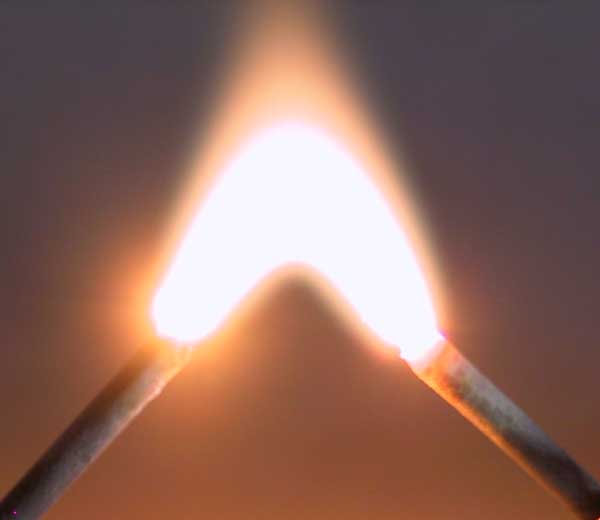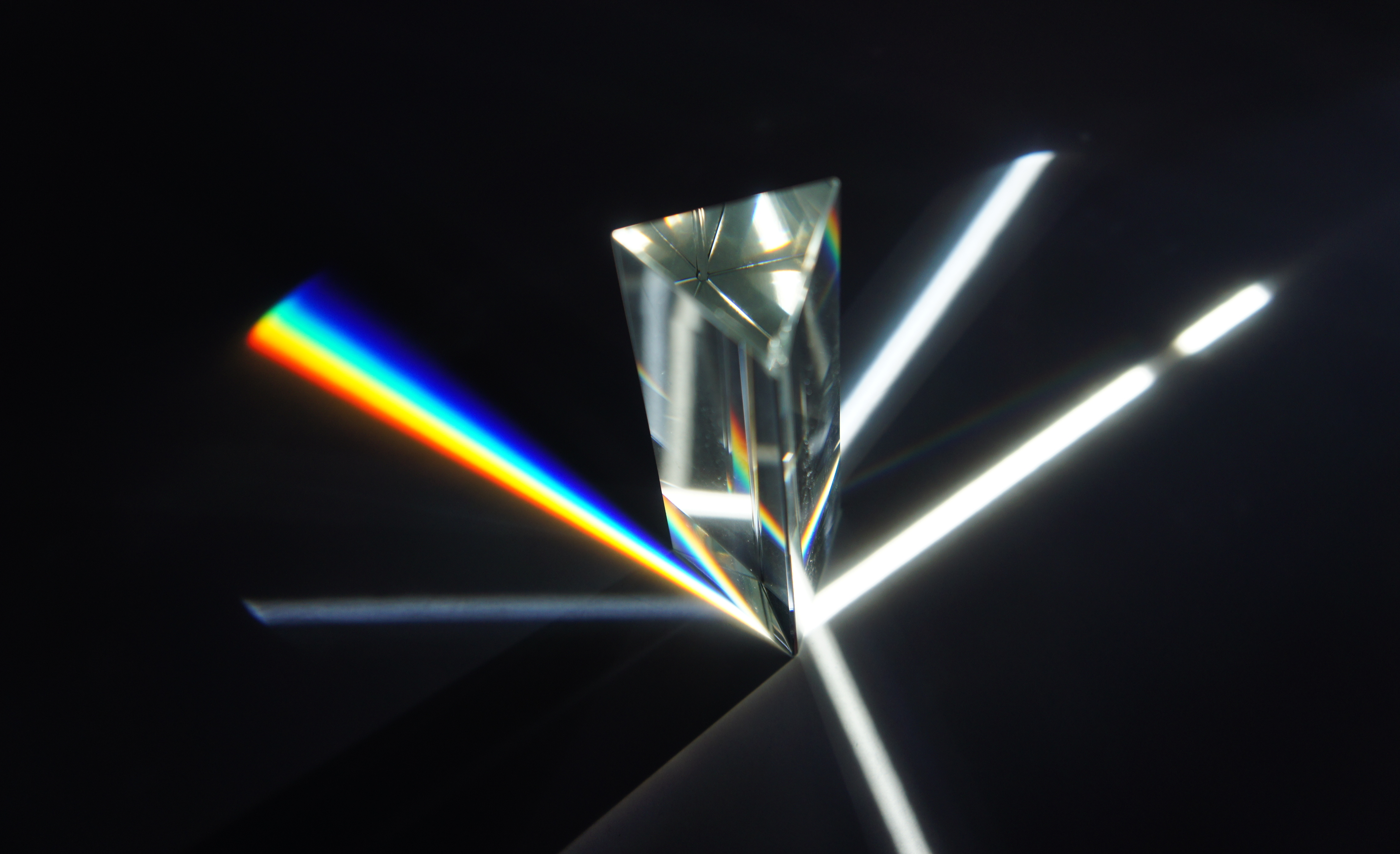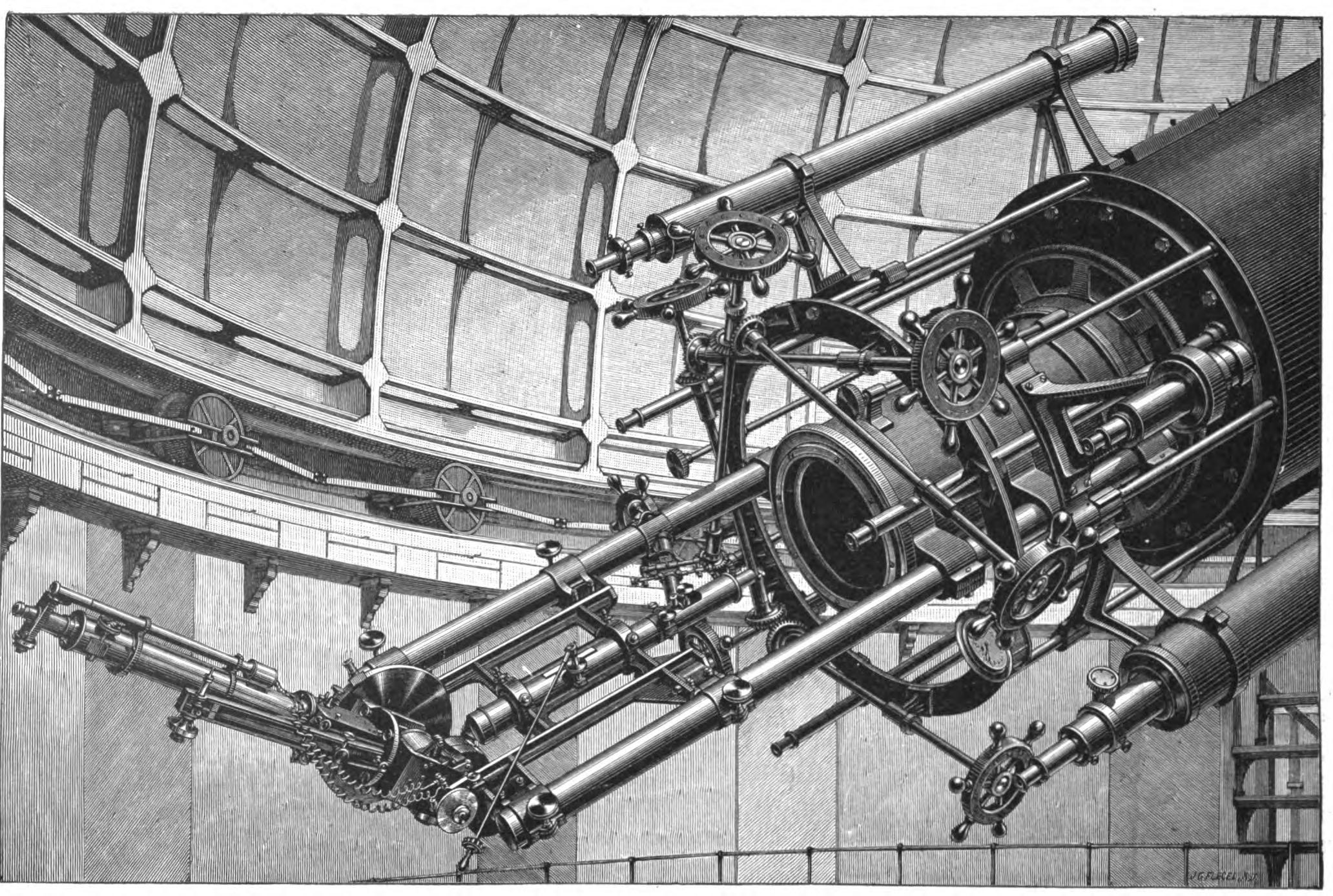|
D. O. Mills Observatory
The , or Manuel Foster Observatory, is an astronomical observatory constructed on Cerro San Cristóbal near Santiago, Chile in 1903. This site was originally known as the D. O. Mills Observatory after the philanthropist Darius Ogden Mills. It was built as an offshoot of the Lick Observatory to observe stars in the southern hemisphere, and, under the direction of the American astronomer W. W. Campbell, was used in an extensive project to determine the apex of the Sun's motion through space. The initial funding for the project financed operations for a two year period. Because Campbell had been seriously injured, the expedition was headed up by his assistant, William H. Wright. After setting up the telescope and the observation dome, the instrument quality was found to be satisfactory and operations began late in 1903. A total of 800 spectrograms had been successfully collected by October 1905. Heber D. Curtis took over operations in March 1906, and new financing from Mills all ... [...More Info...] [...Related Items...] OR: [Wikipedia] [Google] [Baidu] |
Astronomical Observatory
An observatory is a location used for observing terrestrial, marine, or celestial events. Astronomy, climatology/meteorology, geophysics, oceanography and volcanology are examples of disciplines for which observatories have been constructed. The term ''observatoire'' has been used in French since at least 1976 to denote any institution that compiles and presents data on a particular subject (such as public health observatory) or for a particular geographic area (European Audiovisual Observatory). Astronomical observatories Astronomical observatories are mainly divided into four categories: space-based, airborne, ground-based, and underground-based. Historically, ground-based observatories were as simple as containing a mural instrument (for measuring the angle between stars) or Stonehenge (which has some alignments on astronomical phenomena). Ground-based observatories Ground-based observatories, located on the surface of Earth, are used to make observations in the radio ... [...More Info...] [...Related Items...] OR: [Wikipedia] [Google] [Baidu] |
Equatorial Mount
An equatorial mount is a mount for instruments that compensates for Earth's rotation by having one rotational axis, called ''polar axis'', parallel to the Earth's axis of rotation. This type of mount is used for astronomical telescope mount, telescopes and cameras. The advantage of an equatorial mount lies in its ability to allow the instrument attached to it to stay fixed on any celestial object with diurnal motion by driving one axis at a constant speed. Such an arrangement is called a ''sidereal drive'' or ''clock drive''. Equatorial mounts achieve this by aligning their rotational axis with the Earth, a process known as ''polar alignment''. Astronomical telescope mounts In astronomical telescope mounts, the equatorial axis (the ''right ascension'') is paired with a second perpendicular coordinate axis, axis of motion (known as the ''declination''). The equatorial axis of the mount is often equipped with a motorized "''clock drive''", that rotates that axis one revolution e ... [...More Info...] [...Related Items...] OR: [Wikipedia] [Google] [Baidu] |
Silvering
Silvering is the chemical process of coating a non-conductive substrate such as glass with a reflective substance, to produce a mirror. While the metal is often silver, the term is used for the application of any reflective metal. Process Most common household mirrors are "back-silvered" or "second-surface", meaning that the light reaches the reflective layer after passing through the glass. A protective layer of paint is usually applied to protect the back side of the reflective surface . This arrangement protects the fragile reflective layer from corrosion, scratches, and other damage. However, the glass layer may absorb some of the light and cause distortions and optical aberrations due to refraction at the front surface, and multiple additional reflections on it, giving rise to "ghost images" (although some optical mirrors such as Mangins take advantage of it). Therefore, precision optical mirrors normally are "front-silvered" or " first-surface", meaning that the ref ... [...More Info...] [...Related Items...] OR: [Wikipedia] [Google] [Baidu] |
Santiago
Santiago (, ; ), also known as Santiago de Chile (), is the capital and largest city of Chile and one of the largest cities in the Americas. It is located in the country's central valley and is the center of the Santiago Metropolitan Region, which has a population of seven million, representing 40% of Chile's total population. Most of the city is situated between above sea level. Founded in 1541 by the Spanish conquistador Pedro de Valdivia, Santiago has served as the capital city of Chile since colonial times. The city features a downtown core characterized by 19th-century neoclassical architecture and winding side streets with a mix of Art Deco, Gothic Revival, and other styles. Santiago's cityscape is defined by several standalone hills and the fast-flowing Mapocho River, which is lined by parks such as Parque Bicentenario, Parque Forestal, and Parque de la Familia. The Andes Mountains are visible from most parts of the city and contribute to a smog problem ... [...More Info...] [...Related Items...] OR: [Wikipedia] [Google] [Baidu] |
Spectroscopy
Spectroscopy is the field of study that measures and interprets electromagnetic spectra. In narrower contexts, spectroscopy is the precise study of color as generalized from visible light to all bands of the electromagnetic spectrum. Spectroscopy, primarily in the electromagnetic spectrum, is a fundamental exploratory tool in the fields of astronomy, chemistry, materials science, and physics, allowing the composition, physical structure and electronic structure of matter to be investigated at the atomic, molecular and macro scale, and over astronomical distances. Historically, spectroscopy originated as the study of the wavelength dependence of the absorption by gas phase matter of visible light dispersed by a prism. Current applications of spectroscopy include biomedical spectroscopy in the areas of tissue analysis and medical imaging. Matter waves and acoustic waves can also be considered forms of radiative energy, and recently gravitational waves have been associa ... [...More Info...] [...Related Items...] OR: [Wikipedia] [Google] [Baidu] |
James Edward Keeler
James Edward Keeler (September 10, 1857 – August 12, 1900) was an American astronomer. He was an early observer of galaxies using photography, as well as the first to show observationally that the rings of Saturn do not rotate as a solid body. Career and personal life Keeler was born in La Salle Illinois, but grew up and spent the majority of his early life in Mayport, Florida near Jacksonville. His mother's father was a former Governor of Connecticut, Henry Dutton. Keeler worked at Lick Observatory beginning in 1888 but left after being appointed director of the University of Pittsburgh's Allegheny Observatory in 1891. He returned to Lick Observatory as its director in 1898 but died not long after in 1900. Keeler suffered from a heart weakness that went undiagnosed until shortly before his death. On the 12th of August, he died from a sudden stroke. His ashes were interred in a crypt at the base of the 31-inch Keeler Memorial telescope at the Allegheny Observatory. Alon ... [...More Info...] [...Related Items...] OR: [Wikipedia] [Google] [Baidu] |
Solar System
The Solar SystemCapitalization of the name varies. The International Astronomical Union, the authoritative body regarding astronomical nomenclature, specifies capitalizing the names of all individual astronomical objects but uses mixed "Solar System" and "solar system" structures in theinaming guidelines document. The name is commonly rendered in lower case ('solar system'), as, for example, in the ''Oxford English Dictionary'' an''Merriam-Webster's 11th Collegiate Dictionary''. is the gravitationally bound Planetary system, system of the Sun and the objects that orbit it. It Formation and evolution of the Solar System, formed about 4.6 billion years ago when a dense region of a molecular cloud collapsed, forming the Sun and a protoplanetary disc. The Sun is a typical star that maintains a hydrostatic equilibrium, balanced equilibrium by the thermonuclear fusion, fusion of hydrogen into helium at its stellar core, core, releasing this energy from its outer photosphere. As ... [...More Info...] [...Related Items...] OR: [Wikipedia] [Google] [Baidu] |
Bending
In applied mechanics, bending (also known as flexure) characterizes the behavior of a slender structural element subjected to an external Structural load, load applied perpendicularly to a longitudinal axis of the element. The structural element is assumed to be such that at least one of its dimensions is a small fraction, typically 1/10 or less, of the other two.Boresi, A. P. and Schmidt, R. J. and Sidebottom, O. M., 1993, Advanced mechanics of materials, John Wiley and Sons, New York. When the length is considerably longer than the width and the thickness, the element is called a Beam (structure), beam. For example, a closet rod Deflection (engineering), sagging under the weight of clothes on clothes hangers is an example of a beam experiencing bending. On the other hand, a wikt:shell, shell is a structure of any geometric form where the length and the width are of the same order of magnitude but the thickness of the structure (known as the 'wall') is considerably smaller. A l ... [...More Info...] [...Related Items...] OR: [Wikipedia] [Google] [Baidu] |
Electric Arc
An electric arc (or arc discharge) is an electrical breakdown of a gas that produces a prolonged electrical discharge. The electric current, current through a normally Electrical conductance, nonconductive medium such as air produces a plasma (physics), plasma, which may produce visible light. An arc discharge is initiated either by thermionic emission or by field emission. After initiation, the arc relies on thermionic emission of electrons from the electrodes supporting the arc. An arc discharge is characterized by a lower voltage than a glow discharge. An archaic term is voltaic arc, as used in the phrase "voltaic arc lamp". Techniques for arc suppression can be used to reduce the duration or likelihood of arc formation. In the late 19th century, Arc lamp, electric arc lighting was in wide use for Street light#Arc lamps, public lighting. Some low-pressure electric arcs are used in many applications. For example, fluorescent lamp, fluorescent tubes, mercury, sodium, and met ... [...More Info...] [...Related Items...] OR: [Wikipedia] [Google] [Baidu] |
Prism (optics)
An optical prism is a transparent optical element with flat, polished surfaces that are designed to refract light. At least one surface must be angled—elements with two parallel surfaces are ''not'' prisms. The most familiar type of optical prism is the triangular prism, which has a triangular base and rectangular sides. Not all optical prisms are geometric prisms, and not all geometric prisms would count as an optical prism. Prisms can be made from any material that is transparent to the wavelengths for which they are designed. Typical materials include glass, acrylic and fluorite. A dispersive prism can be used to break white light up into its constituent spectral colors (the colors of the rainbow) to form a spectrum as described in the following section. Other types of prisms noted below can be used to reflect light, or to split light into components with different polarizations. Types Dispersive ''Dispersive prisms'' are used to break up light into its ... [...More Info...] [...Related Items...] OR: [Wikipedia] [Google] [Baidu] |
Stellar Spectrum
Astronomical spectroscopy is the study of astronomy using the techniques of spectroscopy to measure the spectrum of electromagnetic radiation, including visible light, ultraviolet, X-ray, infrared and radio waves that radiate from stars and other celestial objects. A stellar spectrum can reveal many properties of stars, such as their chemical composition, temperature, density, mass, distance and luminosity. Spectroscopy can show the velocity of motion towards or away from the observer by measuring the Doppler shift. Spectroscopy is also used to study the physical properties of many other types of celestial objects such as planets, nebulae, galaxies, and active galactic nuclei. Background Astronomical spectroscopy is used to measure three major bands of radiation in the electromagnetic spectrum: visible light, radio waves, and X-rays. While all spectroscopy looks at specific bands of the spectrum, different methods are required to acquire the signal depending on the freque ... [...More Info...] [...Related Items...] OR: [Wikipedia] [Google] [Baidu] |
James Lick Telescope
The James Lick Telescope is a refracting telescope built in 1888. It has a lens, which is in diameter—a major achievement in its day. The instrument remains in operation and public viewing is allowed on a limited basis. Also called the "Great Lick Refractor" or simply "Lick Refractor", it was the largest refracting telescope in the world until 1897, and now ranks third, after the 40-inch refractor at the Yerkes Observatory and the Swedish 1-m Solar Telescope. (The many larger telescopes in use today are reflecting telescopes, with a mirror rather than lens as the major optical component.) The telescope is located at the University of California's Lick Observatory atop Mount Hamilton at an elevation of above sea level. The instrument is housed inside a dome that is powered by hydraulic systems that raise and lower the floor, rotate the dome and drive the clock mechanism to track the Earth's rotation. The original hydraulic arrangement still operates today, with the exceptio ... [...More Info...] [...Related Items...] OR: [Wikipedia] [Google] [Baidu] |









